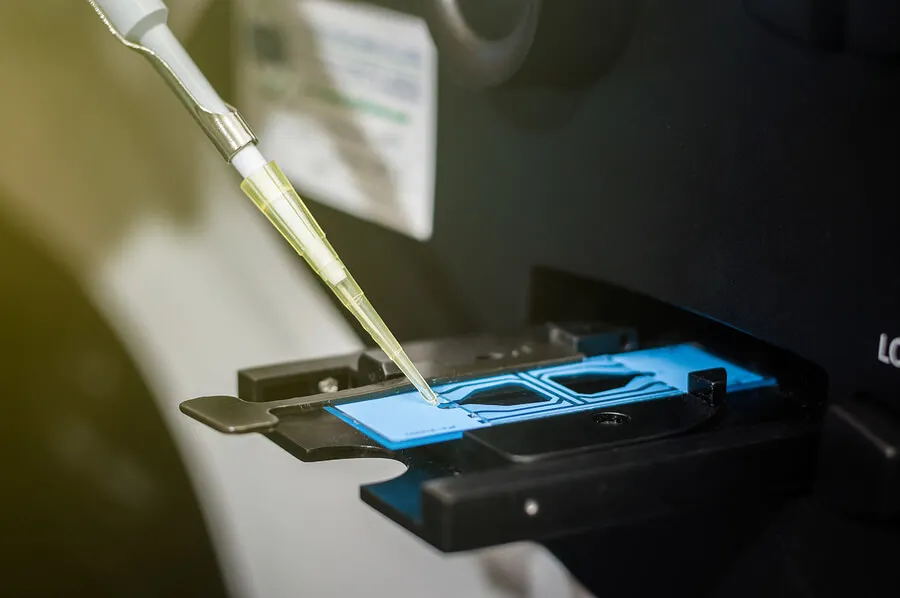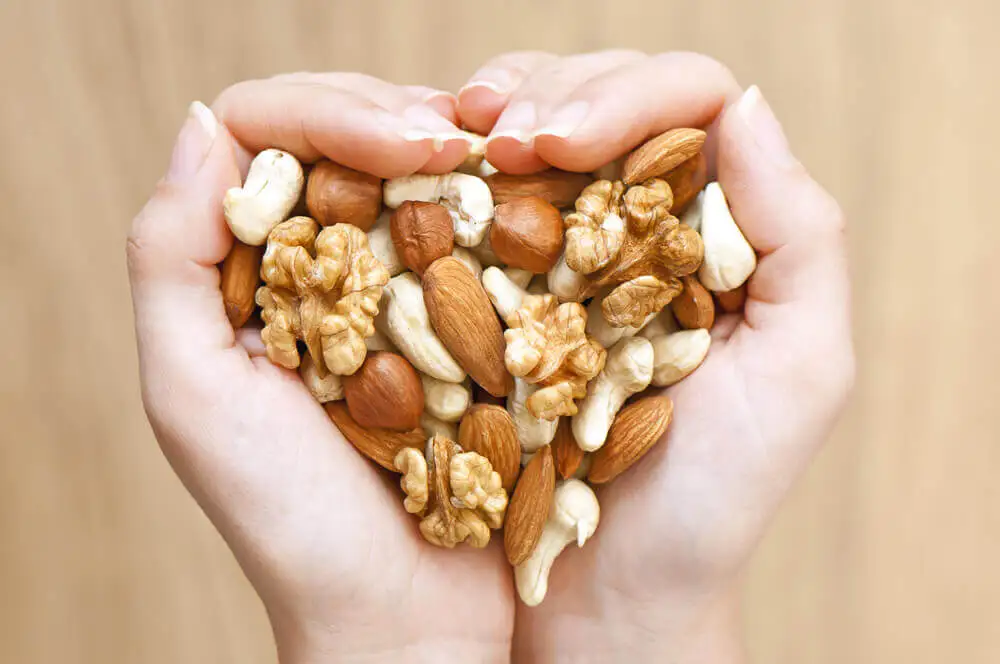Nuts Shown to Improve Sperm Quality


Written and verified by the doctor Maryel Alvarado Nieto
In recent decades, a progressive decrease in semen quality has been observed in Western men. As a result, several theories have emerged proposing that an unhealthy lifestyle is responsible for this phenomenon. A group of scientists is trying to prove that the consumption of nuts can help improve sperm quality.
Diet is one of the factors involved in the main diseases that afflict industrialized societies. Therefore, it’s quite normal to think that this same nutritional deficiency is also related to the origin of problems affecting the sexual sphere.
How is sperm quality measured?
The study of male infertility is quite broad and complex. It involves a multidisciplinary approach, as the causes are also multiple. However, there’s one laboratory test that’s common and specific to fertility problems: the spermogram.
Sampling
There are universal recommendations for collecting a semen sample. It’s advisable to obtain it by masturbation, after cleansing hands and genitals.
The ideal container should be sterile, warm, and have a wide mouth to avoid losing part of the sample. It’s important to emphasize that sexual abstinence should be for at least 2 days previously, but not more than 7 days.
It’s preferable that the sample collection takes place in an intimate space provided for this purpose. If this isn’t possible, then transportation should preserve a temperature of between 20°C and 40°C.
Macroscopic characteristics of the semen
The initial evaluation should be carried out as soon as possible. The following physical characteristics of the sperm are determined in this inspection:
- Liquefaction
- Appearance
- Viscosity
- Volume
- pH

Microscopic aspects of seminal fluid
The study of spermatozoa includes sperm count, but their motility, vitality, and the percentage of live sperm should also be determined. Morphology can be visualized with various techniques under the microscope.
Small volumes are taken with a pipette. In addition, other cellular elements present in the sample and the degree of agglutination must be identified.
Factors that decrease sperm quality
Male infertility remains difficult to quantify. It is, therefore, necessary to determine the many different factors involved in male fertility problems.
We know that there’s a possible relationship between some unhealthy, but quite frequent, lifestyle habits and low sperm quality. In addition, Western societies are exposed to various environmental factors that also have a negative impact:
- Alcohol consumption
- Smoking
- Obesity
- Inadequate nutrition
- Sedentary lifestyle
- Prolonged and intense exercise
Could the environment have an impact on fertility?
Exposure to physical agents and chemicals also has an impact on sperm quality. Environmental factors that have an impact include the following:
- Radiation and electromagnetic fields. These include the waves emitted by cell phones.
- Heat, since it causes damage to spermatozoa.
- Contaminants such as pesticides and solvents.
- Exposure to heavy metals, among which the most studied are lead and mercury, as they cause damage to sperm DNA.
Walnuts, hazelnuts, and almonds: are nuts good for male fertility?
Nuts are foods with high nutritional value, although their composition differs depending on the type of nut in question. They’re rich in fatty acids, vitamins, and trace elements.
Therefore, the current recommendation is to consume them regularly. However, the effects on fertility lacked sufficient solid grounds to link them directly to an increase in sperm quality.
Fatty acids are related to several important functions, as they’re part of the cell structure itself. The variety of unsaturated fatty acids, such as omega-3, has a beneficial effect on sperm quality.
Find out more: Omega 3: More Foods Than Just Oily Fish
How was the study on sperm quality conducted?
The research began after obtaining a population of healthy men between the ages of 18 and 35. What they all had in common was that they regularly consumed a Western diet.
They were randomly separated into two groups. The first group was given 60 grams of nuts every day for 14 weeks. The second group served as a control.
Western diets have nutritional deficits. Because of this, supplementing with nutrient-dense foods, such as nuts, seemed reasonable to the researchers.
They used a mixture of 30 g (1.2 oz) of walnuts, 15 g (0.6 oz) of almonds and 15 g (0.6 oz) of hazelnuts, giving a total of 60 g (2.4 oz), the equivalent of two handfuls of nuts per day.
Samples were taken at the beginning of the research and after 14 weeks. Sperm were also collected after 3 days of sexual abstinence. Studies were also carried out to isolate sperm DNA.

Improvements in the spermogram
After 14 weeks from the start of the study, a significant difference in spermogram parameters was evident. In the men who consumed nuts, there was an increase in sperm count, as well as an improvement in motility and morphology.
DNA methylation and sperm quality
The study showed a small but significant difference in the methylation of 36 genomic regions in the group of men who consumed nuts. This shows that external factors do have the capacity to modify gene expression.
These modifications over time have an impact on fertility. Therefore, healthy lifestyles, including a balanced diet, are a fundamental pillar of sexual health.
This research is only the beginning
The research has certain limitations, and one of these is the fact that only a small sample group was analyzed. Therefore, further advances are needed to confirm these findings.
However, due to the multiple benefits of nut consumption on general health, incorporating nuts into the diet on a regular basis is always a positive option. Especially if it offers the added benefit of improving sperm quality.
All cited sources were thoroughly reviewed by our team to ensure their quality, reliability, currency, and validity. The bibliography of this article was considered reliable and of academic or scientific accuracy.
- Salas-Huetos, A.; James, E.; Salas-Salvadó, J.; Bulló, M.; Aston, K.; Carrell, D.; Jenkins, T.; Sperm DNA Methylation Changes after Short-Term Nut Supplementation in Healthy Men Consuming a Western-Style Diet; Andrology; 9: 260 – 268; 2020
- Salas-Huetos, A.; Blanco, J.; Anton, R.; El Consumo de Frutos Secos Mejora la Calidad del Semen; Universitat Autònoma de Barcelona; UABDivulga; 2019
- Giraldo, A.; La Fertilidad Masculina, el Zinc y los Ácidos Grasos; Universidad de Valladolid; 2017
- Villaverde, V.; Epidemiología de la Esterilidad. Influencia de los Factores Ambientales; Revista Iberoamericana de Fertilidad; 31: 31 – 37; 2014
- Rivera, M.; Factores y Tratamiento Nutricional para Fertilidad Humana Masculina; Universidad de Valladolid; 2017
- Balitán, C.; Blanco, D.; Cabrera, A.; Hernández, Y.; Factores Asociados a la Baja Calidad del Esperma; Universidad Nacional Autónoma de Nicaragua; Revista Universidad y Ciencia; 8(12): 13 – 26; 2015
- Lane, A. R., Magallanes, C. A., & Hackney, A. C. (2019). Disfunción reproductiva por entrenamiento físico: el” hipogonadismo masculino producto del ejercicio”. Arch. med. deporte, 319-322.
This text is provided for informational purposes only and does not replace consultation with a professional. If in doubt, consult your specialist.








